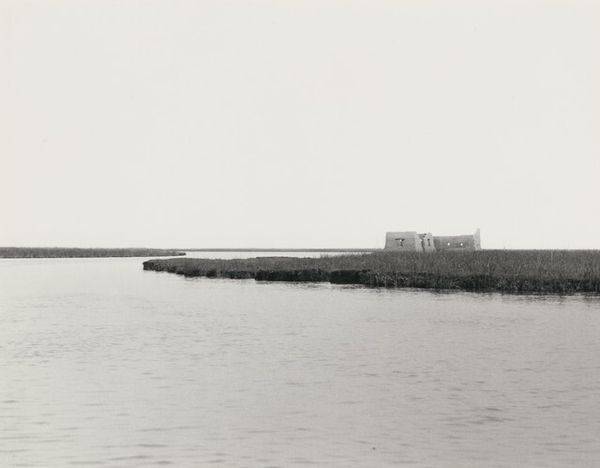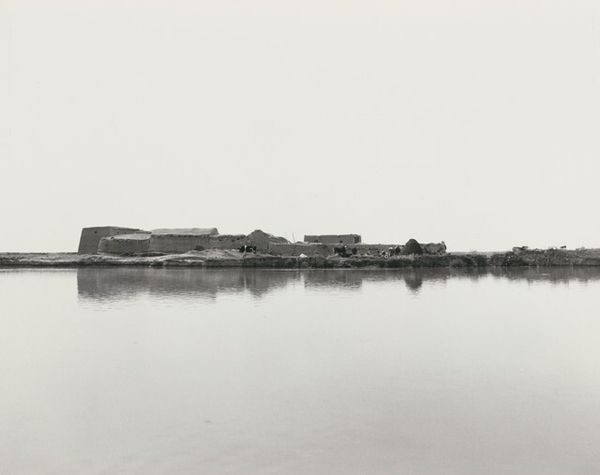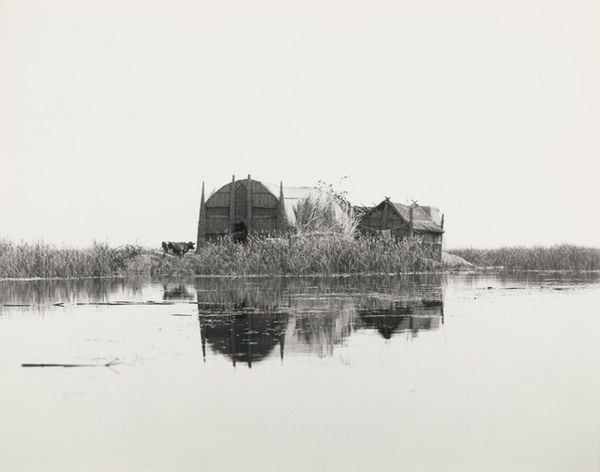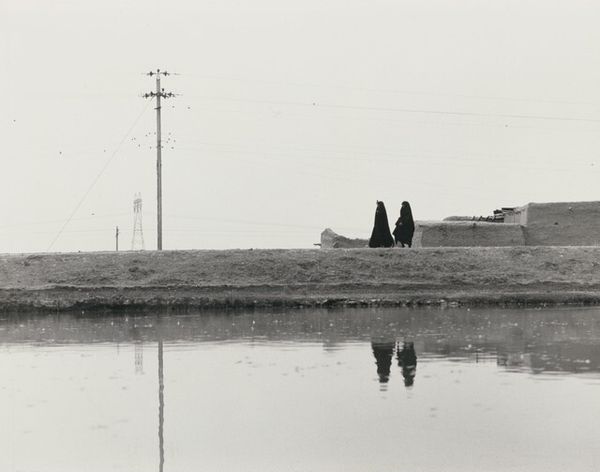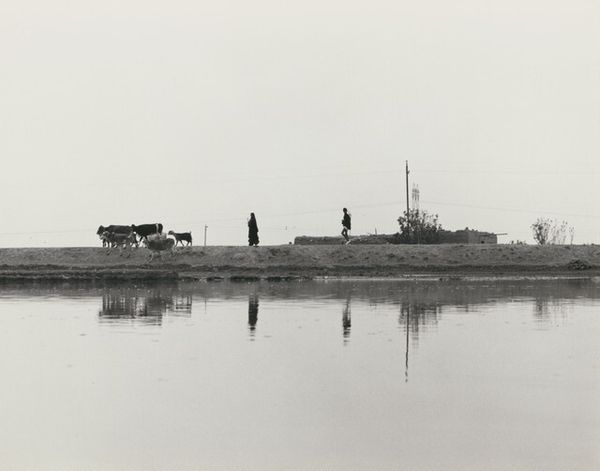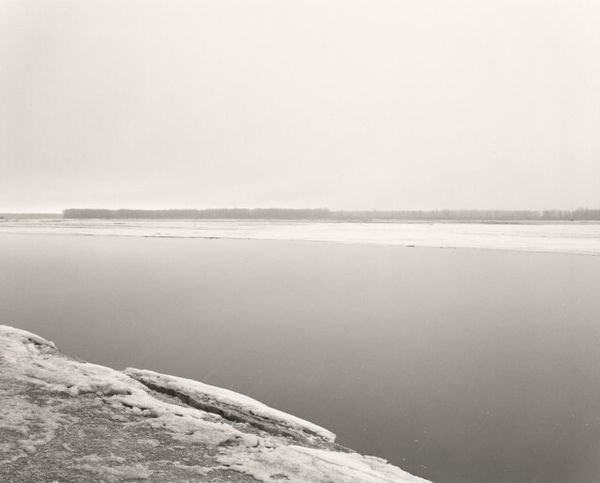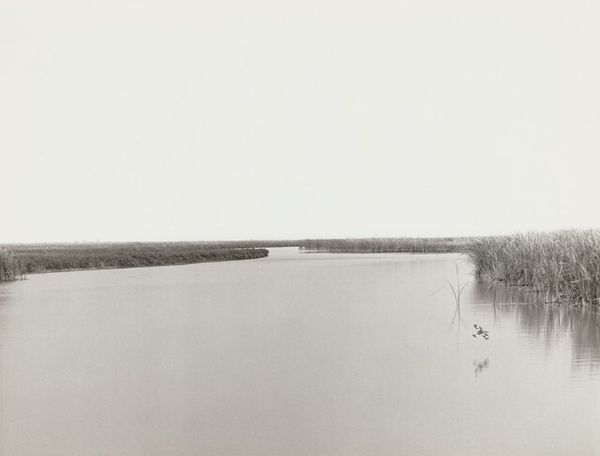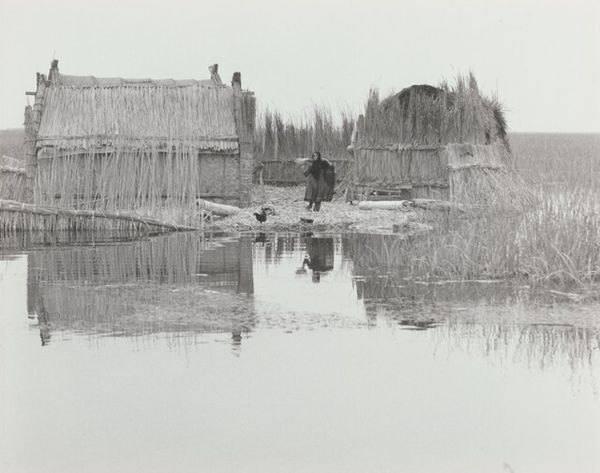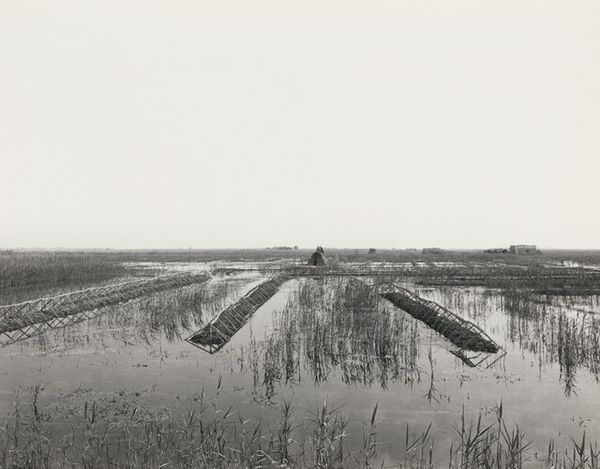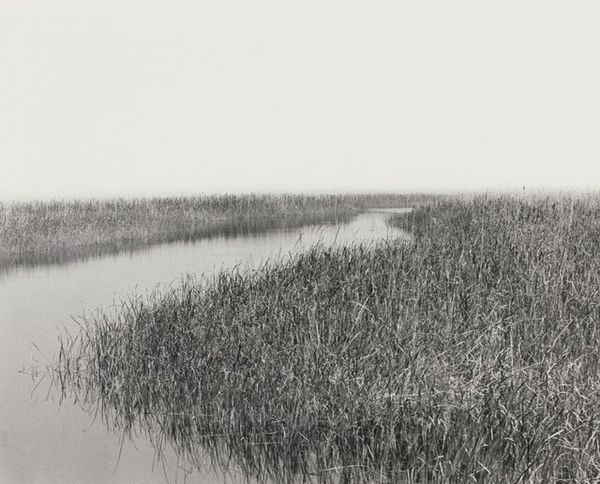
photography
#
scenic
#
countryside
#
landscape
#
photography
#
outdoor scenery
#
scenic photography
#
landscape photography
#
sky photography
#
coastline landscape
#
shape of cloud
#
skyscape
#
modernism
#
realism
#
shadow overcast
Dimensions: image/sheet: 24.2 × 29.9 cm (9 1/2 × 11 3/4 in.)
Copyright: National Gallery of Art: CC0 1.0
Editor: This is an untitled photograph by Ursula Schulz-Dornburg, taken in 1980. The silvery tones and the flat, watery foreground give it a strangely peaceful yet desolate quality. What strikes you about this work? Curator: I see a landscape almost stripped bare, a stage for primal existence. The animals along the ridge are starkly rendered, archetypal forms against a pale backdrop. They become potent symbols— survival, perhaps, and the enduring link between humanity, animals and place. Editor: It feels very minimal, almost abstract, despite clearly depicting a real place. Is there a reason to depict places stripped of civilization? Curator: The apparent simplicity is deceptive. Note the reflections in the water, how they double and distort the 'real' world above. Schulz-Dornburg presents not just a location, but a meditation on perception and reality. Do the stark, repeated lines remind you of something? Perhaps boundaries? Editor: Boundaries, yes! Like edges of settlement. It makes me wonder where it was taken and what the circumstances of the inhabitants may be. Curator: Precisely! The artist frequently photographed regions on the margins – both geographically and politically. She recorded those whose existence is etched in the land, preserving a visual memory of those people and places which may easily be forgotten or overlooked. Editor: So it’s about reminding us of shared cultural memory. Thank you – that really deepens my understanding of what I am looking at. Curator: My pleasure. Looking closely at the arrangement of these visual symbols enables us to remember something profound about what endures across place and time.
Comments
No comments
Be the first to comment and join the conversation on the ultimate creative platform.
